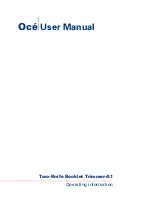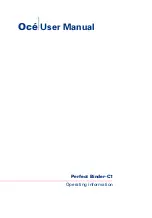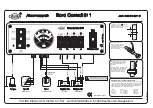
12
User's Guide ADI-648 © RME
INT.
For INTERNAL, 44.1 kHz or 48 kHz sampling rate is available. Note: the key 96k FRAME does
only affect the the format of the MADI output, not channel distribution or sample rate of the
ADAT outputs.
For the INTERNAL clock setting it is mandatory that the clock rate of the sources is syn-
chronous to the ADI-648. Therefore the external device has to be synchronized to the ADI-
648's word clock out or ADAT/MADI out.
The ADI-648 thus has to be master, all devices connected to it slave. In order to avoid clicks
and drop outs due to faulty or missing synchronicity, a special process called
SyncCheck
com-
pares the incoming data and the ADI-648's internal clock. SYNC is indicated by flashing (error)
or constantly lit (OK) LED.
8.2 Lock, SyncCheck and SyncAlign
Digital signals consist of a carrier and the data. If a digital signal is applied to an input, the re-
ceiver has to synchronize to the carrier clock in order to read the data correctly. To achieve
this, the receiver uses a PLL (Phase Locked Loop). As soon as the receiver meets the exact
frequency of the incoming signal, it is locked. This
Lock
state remains even with small changes
of the frequency, because the PLL tracks the receiver's frequency.
If an ADAT or MADI signal is applied to the ADI-648, the corresponding input LED starts flash-
ing. The ADI-648 indicates LOCK, i. e. a valid input signal (in case the signal is in sync, the
LED will be lit conctantly, see below).
Unfortunately, LOCK does not necessarily mean that the received signal is correct with respect
to the clock which processes the read out of the embedded data. Example [1]: The ADI-648 is
set to 44.1 kHz INT(ernal), and a mixing desk having an ADAT output is connected to input
ADAT1. The INPUT LED will show LOCK immediately, but the mixing desk's clock is usually
gernetaed internally (clock mode master), thus slightly higher or lower than the ADI-648's inter-
nal sample rate. Result: When reading out the data, there will frequently be read errors that
cause clicks and drop outs.
Also when using multiple inputs, a simple LOCK is not sufficient. The problem described above
can be solved elegantly by setting the ADI-648 from INT to INPUT (its internal clock will then
be the clock delivered by the mixing desk). But in case another asynchronous source is con-
nected, there will again be a slight difference in the sample rate, and therefore clicks and drop
outs.
In order to display those problems optically at the device, the ADI-648 contains
SyncCheck
®
. It
checks all clocks used for synchronicity. If they are not synchronous to each other (i. e. abso-
lutely identical), the SYNC LED of the asynchronous input flashes. If in total sync, the LED will
be lit constantly. In example 1 it would have been obvious at once that the SYNC ADAT1 LED
was flashing.
In practice, SyncCheck allows for a quick overview of the correct configuration of all digital
devices. So one of the most difficult and error-prone topics of the digital studio world finally
becomes easy to handle.













































